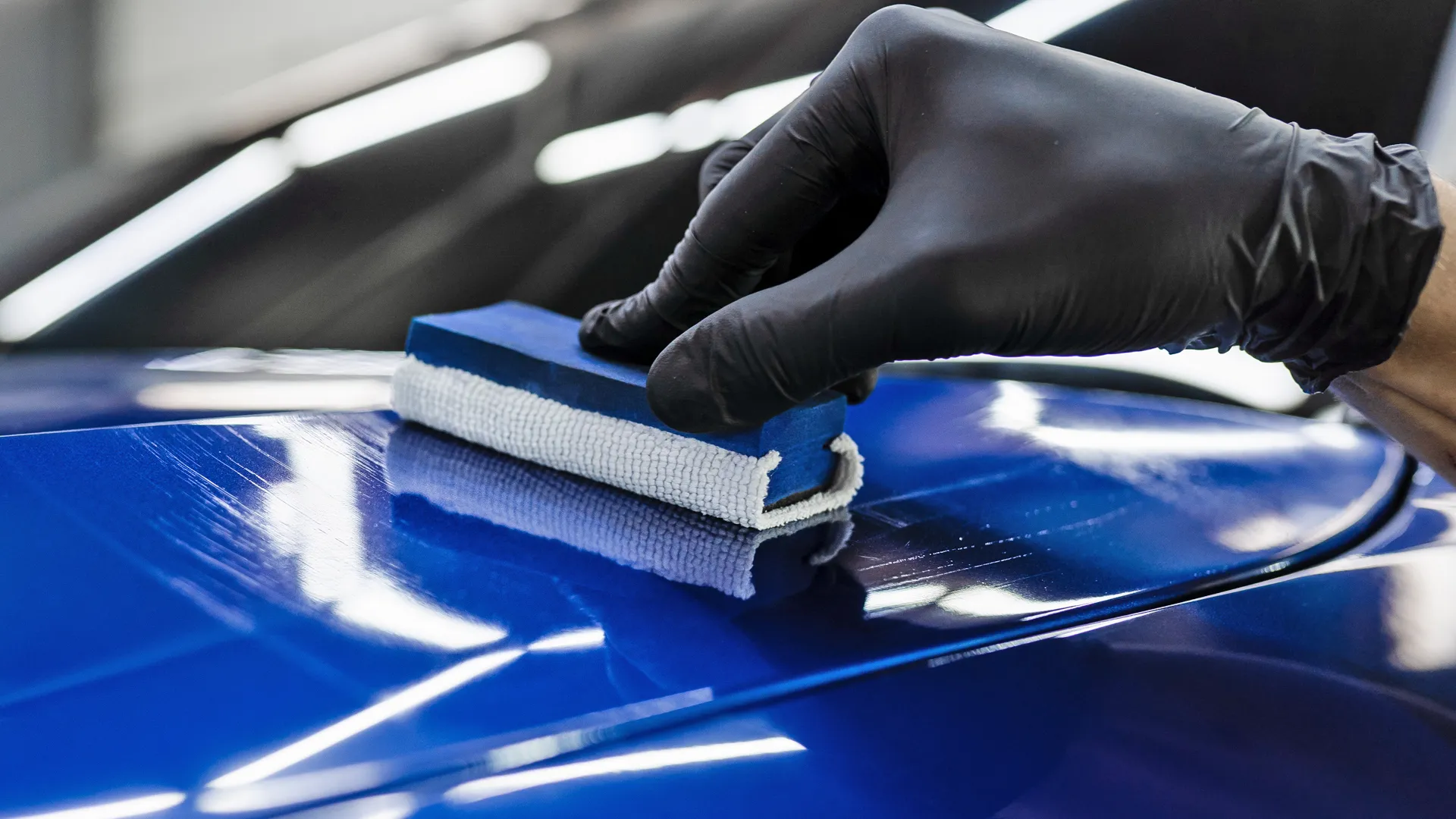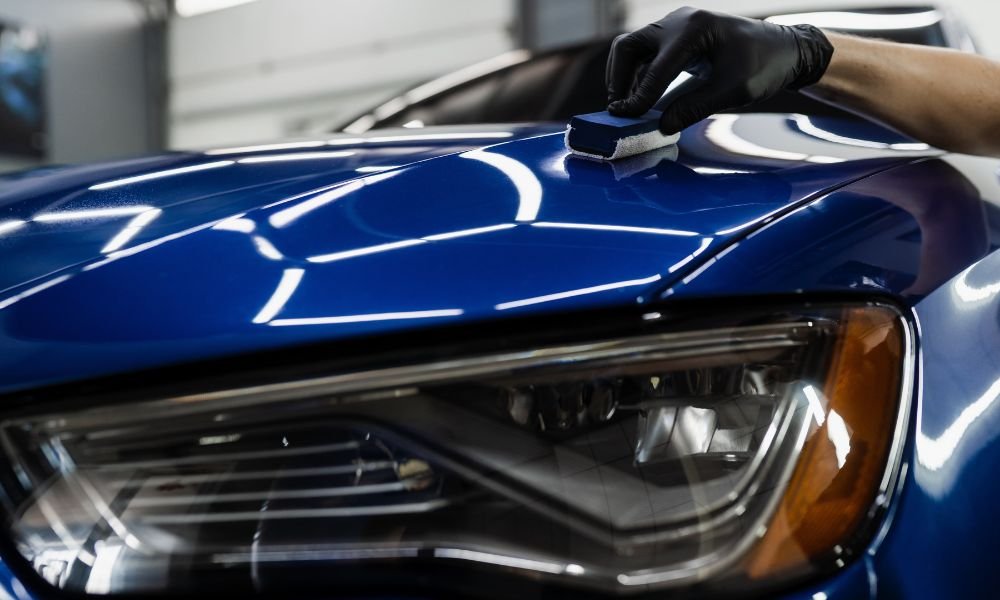Ceramic Finishing vs. Typical Wax: Which Offers Better Defense?
The debate in between ceramic finish and typical wax for car defense is one that advantages careful assessment, especially in terms of durability, resistance to environmental aspects, and overall upkeep needs. While ceramic finishes promise extended longevity and exceptional protection versus a range of dangers, conventional wax might appeal to those looking for an extra budget-friendly, albeit temporary, remedy.
Overview of Ceramic Coating
Ceramic layer has actually gotten significant appeal amongst auto enthusiasts and professionals alike for its innovative safety qualities. This cutting-edge option includes a liquid polymer that chemically bonds to the automobile's manufacturing facility paint, forming a resilient layer of defense. Unlike standard wax, which commonly lasts for a few weeks to months, ceramic coverings can give resilient security for several years, relying on the item made use of and application method.

While the initial expense of ceramic finish may be greater than that of conventional wax, the lasting advantages, including longevity and decreased maintenance regularity, typically justify the financial investment. As auto innovation proceeds to develop, ceramic coatings have become a preferred option for those seeking optimal defense and long life for their vehicles.
Review of Conventional Wax
The appeal of standard wax hinges on its simplicity and convenience of use, making it a favored option amongst car proprietors looking for to enhance their car's appearance and provide a basic level of protection. Usually originated from all-natural carnauba or synthetic polymers, standard wax develops a slim safety layer over the paintwork. The application process is straightforward, typically entailing a straightforward buffing with a microfiber fabric, making it easily accessible to both newbie and experienced customers.
Standard wax items are offered in various formulas, each developed to cater to particular requirements, such as boosting luster or providing water beading. The adaptability of wax permits for usage on different surface areas, including paint, glass, and even plastic trim. While the application can be done by hand or equipment, the secret is to make certain a tidy surface area for optimal attachment.
However, one noteworthy characteristic of traditional wax is its relatively brief life-span compared to modern choices. Generally supplying security that lasts from a few weeks to a few months, constant reapplication is essential to keep its performance. Regardless of these constraints, conventional wax stays a prominent choice for car lovers who value the aesthetic enhancement it supplies.
Key Defense Features
When considering paint protection for automobiles, it's important to comprehend the key attributes that differentiate typical wax from more sophisticated choices like ceramic coverings. One of the primary safety qualities of ceramic layers is their durability. Unlike wax, which normally lasts a few weeks, ceramic coverings can sustain for a number of years, offering long-term defense versus environmental Learn More impurities.
Ceramic finishings develop a hydrophobic surface area, repelling water and preventing dirt, crud, and other debris from adhering to the paint. This feature not just improves the vehicle's look but additionally lowers the regularity of washing. In addition, ceramic layers use superior UV defense, securing the paint from dangerous sun direct exposure that can lead to fading and oxidation.
On the other hand, conventional wax offers an extra short-lived barrier against aspects however lacks the resistance to scrapes and chemical stains that ceramic finishes offer. While wax can improve gloss, its protective capacities are limited, specifically against harsher environmental elements such as bird droppings, tree sap, and roadway salt. In summary, the essential security attributes of ceramic layers substantially outshine those of standard wax, making them a superior choice for resilient automobile care.
Application Process Contrast

In comparison, the application of ceramic coverings is extra time-sensitive and complicated, often requiring specialist assistance for optimal results. The car's surface should find here be thoroughly cleansed, decontaminated, and polished browse around this web-site to get rid of flaws prior to the finishing is applied.
Eventually, the option between wax and ceramic coating pivots not just on security levels but also on the moment, competence, and resources offered for their particular applications. - ceramic coating
Expense Evaluation and Longevity
Cost plays a substantial duty in the decision-making procedure between traditional waxes and ceramic finishings. Ceramic layers normally command a greater upfront financial investment, ranging from $500 to $2,000 relying on the top quality, brand, and specialist application solutions. This preliminary price can be connected to the advanced innovation and materials utilized in ceramic solutions, which supply superior resilience and defense.
On the other hand, traditional waxes are a lot more budget-friendly, typically setting you back in between $20 to $100 for do it yourself applications. However, the long life of wax products is restricted, typically needing reapplication every few months to preserve their protective qualities. This persisting expenditure can collect in time, making wax much less cost-effective in the long run.
Ceramic finishings, while more costly originally, provide resilient results, typically surpassing 2 to 5 years with correct upkeep. This long life can give substantial savings with time, particularly for car proprietors that focus on defense and visual preservation - ceramic coating. Eventually, the choice between traditional waxes and ceramic finishes need to consider both initial prices and long-lasting worth, considering the maintenance demands and desired security degree for the automobile
Final Thought
In recap, ceramic coverings give remarkable defense for vehicle paint compared to standard wax, offering boosted sturdiness, resistance to ecological variables, and hydrophobic buildings. While the first investment for ceramic coatings is greater, their longevity and decreased maintenance needs validate the price. Inevitably, for those looking for long-term automobile treatment and security, ceramic coverings represent a much more effective solution than conventional wax, which uses just short-term benefits.
The discussion between ceramic layer and traditional wax for car protection is one that values cautious evaluation, particularly in terms of toughness, resistance to environmental factors, and total maintenance requirements.When thinking about paint security for cars, it's necessary to understand the essential features that identify standard wax from more advanced alternatives like ceramic finishes. In summary, the key security functions of ceramic coatings significantly outperform those of typical wax, making them a remarkable choice for lasting car treatment.
Inevitably, the selection between standard waxes and ceramic coatings need to take into consideration both initial costs and long-lasting worth, factoring in the upkeep needs and desired protection level for the vehicle.
In summary, ceramic coverings supply exceptional security for vehicle paint contrasted to conventional wax, offering improved sturdiness, resistance to ecological variables, and hydrophobic residential properties.